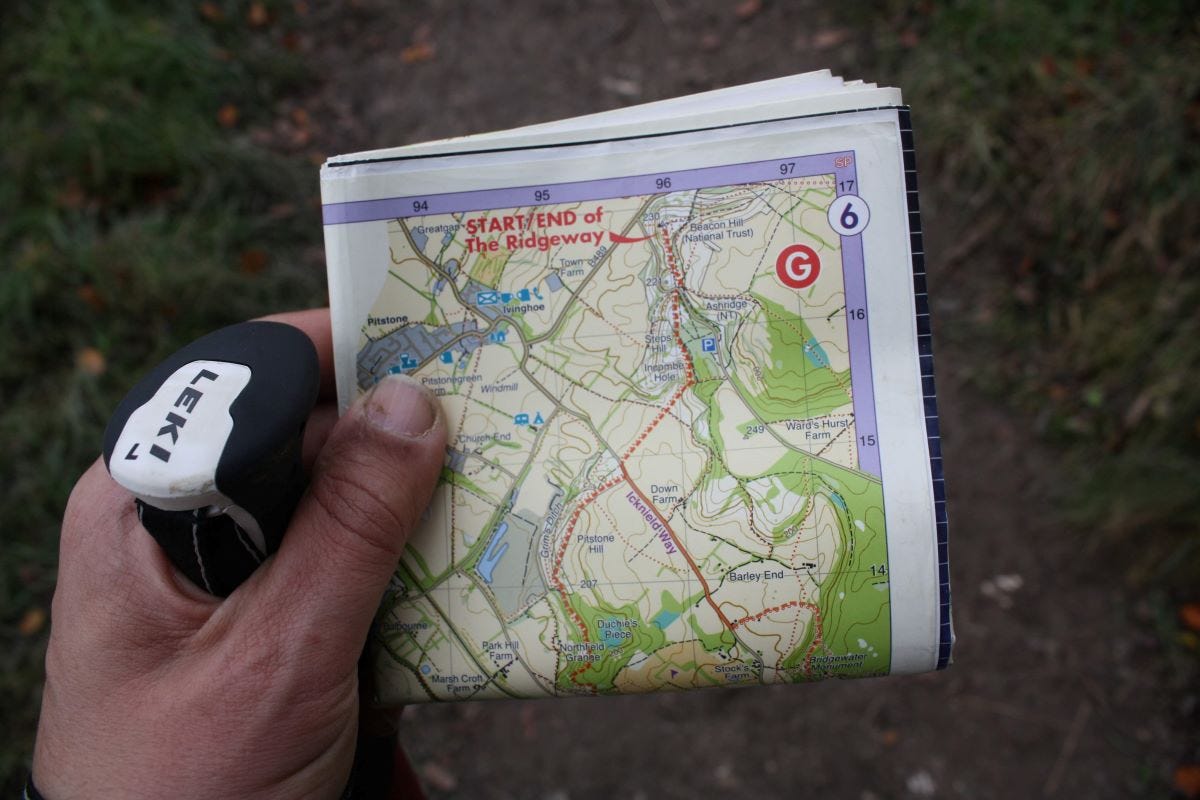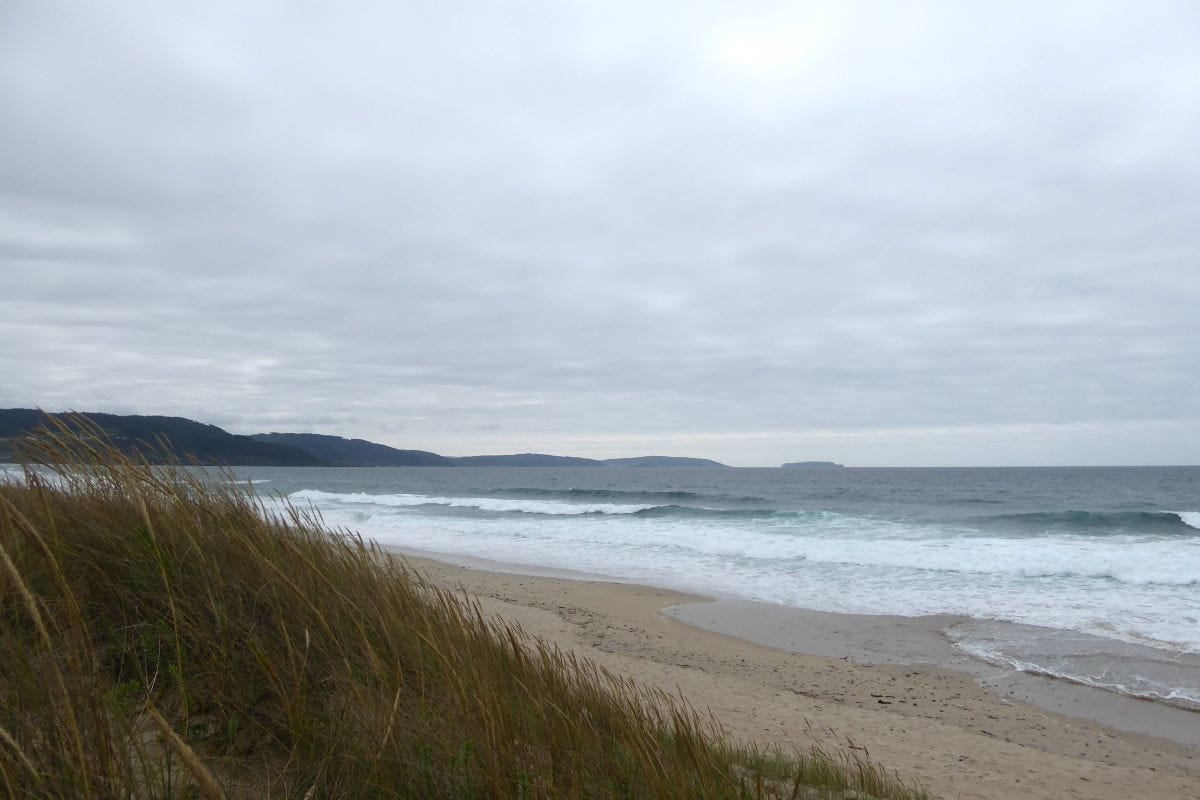As a child, one of my favourite books was my family’s world atlas. It had huge, heavy pages and intensely coloured images. I could spend hours tracing the contours of mountains, and following the blue lines of rivers as they curved across the page.

Later in life, I discovered the precision of Ordnance Survey mapping. Unfolding and refolding these giant sheets is an art I never quite mastered, but I marvelled at the intricate patterns and colours of footpaths, cliff faces, boundaries and church steeples.
I loved studying condensed maps of walks, focused just on single footpaths and their surrounding landscapes. Any book with a map in its early pages would quickly have me hooked. And Google Maps is still one of the most-opened apps on my phone.
I love maps. But I struggle with them, too.
The limits of maps
In truth, my happiest times with maps come when I am enjoying them in the warmth and comfort of home. Walking map in hand has always been a challenge for me.
I used to think I was doing something wrong because I struggled to reconcile the printed two-dimensional overview I carried and the immersive three-dimensional landscape that I walked. Orientation courses taught me to rotate the map to align it with my view, but this barely helped me find my way.
As I learned more about my aphantasia, I realised I simply cannot hold the picture of a map in my mind. I have to constantly check and recheck, repeatedly glancing from image to reality to make sense of my progress. Walking with a map can be slow going for my brain and my feet alike.
And maps themselves have limits. The Ordnance Survey divides the country into a neat grid, and bundles these into maps at various scales. But on paper, these maps have hard, white edges that do not appear on the landscape. In electronic form, they are limited by phone signals or remembering to download in advance.
But more, they offer a stripped-back, edited picture of the country that erases so much detail. Maps solidify a worldview of ownership and access, erase histories and cultures, and privilege a human perspective on natural complexity.
A perfectly accurate map would be perfectly useless, of course. Maps, I've learned, are not the land, and it's the land I walk, not the map that summarises it. The world enfolds me in a way a map never can.
Walking the land
My body moves along paths that curve through the landscape, where wind blows and birds cry. The sky changes, and sunlight casts deep shadows. Weather limits my vision or opens endless vistas. All of this is missing from a map.
It's a wonderful experiment to walk without a map, to simply follow my footsteps and see where they carry me. On my way to the Camiño dos Faros in Galicia, I dispensed with a map for the portion of my journey that took me along the coast from A Coruña to Malpica. The principle seemed simple enough: if I kept the sea on my right shoulder and walked towards the setting sun, I was headed in the right direction.
The reality was more challenging, and I ran into seemingly endless obstacles. I circled villages, met impassable cliffs and stumbled on broken paths. But I also slept by the sea, encountered ancient stones and followed the flight of magpies.
I slipped into a deeper conversation between my footsteps and the path I made by walking. I found my way by getting lost.
Being lost
Maps offer the comfort of being able to locate myself, but a map's usefulness is limited by my ability to read the place it represents. GPS trackers offer a sense of security, but this, too, is illusory. It is easy to lose myself.
Being lost is something many people are scared of. In the 1990s, psychologist Elizabeth Loftus conducted a now famous experiment in which people were presented with memories of childhood events, three true and one false. The fabricated memory was of being lost in a shopping mall. In the following weeks, a quarter of the study’s participants came to view this false memory as accurate, even adding details and confabulations to embellish the story.
The study demonstrated not only the malleability of memory but also our deep-seated fear of being lost. It's easy to imagine how a child might feel if they were disoriented and alone, even if it never happened to us. Not knowing our place in the world is deeply unsettling.
Over time, I've learned that it's OK to not know where I am. Life often takes me beyond the well-trodden path, into unfamiliar territory and beyond the edge of the map. Even though I walk on uncharted ground, I do not travel alone. The world surrounds me, and my trailmaking becomes a many-voiced conversation with the more-than-human community. I can locate myself in the family of all beings and orient myself to the ground beneath my feet.
Losing myself
Rebecca Solnit's book, A Field Guide to Getting Lost, is a wonderful collection of essays that explore loss, being lost and losing things and people, including yourself. I warmly recommend it, not just for the incredible beauty of her prose but for her insights into the value of uncertainty.
"To be lost is to be fully present," she writes, "and to be fully present is to be capable of being in uncertainty and mystery. And one does not get lost but loses oneself, with the implication that is it a conscious choice, a chosen surrender, a psychic state achievable through geography."
For as long as I cling to the idea that there is a map to guide my steps through life, I will never find myself. Sure, I can walk the same well-worn trails that others have followed, but how does this help me discover my place in the world?
Consciously surrendering my map opens up the possibility of self-discovery. It is terrifying and disorienting, but ultimately, it is the only way to discover the path that is mine alone to walk.
Beyond the map
Whether you’re walking through life or a landscape, letting go of the need for a map is challenging. But poet José A. Alcántara offers some practical steps. He once saw Solnit's book lying on a friend's coffee table, and rather than read it, he simply imagined the advice it might contain. These are his conclusions.
Excerpts from A Field Guide to Getting Lost
If you have a compass, smash it.
Nothing can point you to true anything, let alone true north.
Besides — and never forget this — you are trying to get lost.
You may be gone for a long time
so be sure not to pack any food or water.
It is only the hungry who feed, only the thirsty who are quenched.
Before you leave, be sure to write a note
telling everyone exactly where you will not be.
The last thing you need is someone coming to your rescue.
Now, find the best map possible
and tear it up. You will be traveling on a scale
that no one has ever drawn.
Do not leave a string of crumbs behind you.
This would only attract predators.
On second thought, go ahead.
Write postcards telling everyone of your adventures.
Be sure to lie, like a fox leaving false tracks.
Someday they will thank you.
You will not know when you have arrived.
But if you think you have, you haven’t.
If you think you haven’t, you probably have.
If you come to a fork in the road
stab yourself in the foot with it. You will
reach your destination much faster if you are limping.
Better yet, use it to pluck out your eyes.
There are many signposts along the way.
Maybe now you will learn to see.
So, here’s the encouragement: Let yourself become lost. Find the best guide you can and tear it up. Smash your compass. And trust your feet to find your path and follow wherever it leads, even as it takes you beyond the edge of the map.





I'm glad the poem struck a chord with you. I loved it the first time I heard it, actually before I'd read the book!
This is magical, thank you. I was thinking of Solnit's book before you mentioned it. That response by Alcántara is incredibly beautiful, and rather insightful too!
Personally I love maps and think they have a valuable role in life, but it definitely isn't in navigating the earth, as you have so beautifully said.